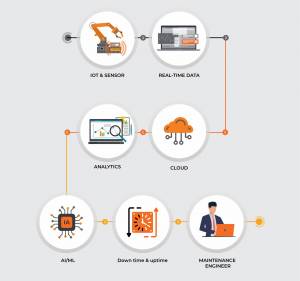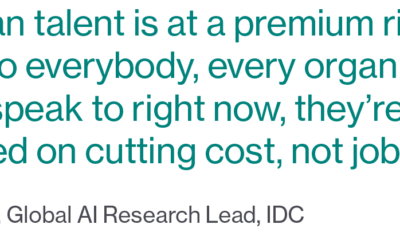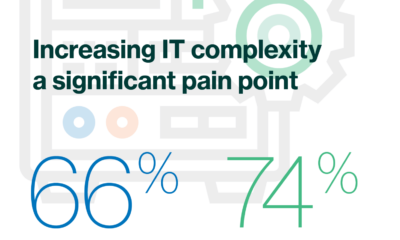Politics
Predictive Analytics in Manufacturing – How It Works [Use Case]
Published
3 years agoon
By
Drew Simpson
Manual operations in manufacturing often lead to increased costs and decreased growth. Manufacturers have to resolve 4 critical challenges: operations optimization, cost savings, production quality improvement, and demand forecasting.
Digitizing one or two processes can only work to an extent and only a complete digital solution could come in handy. Especially, critical challenges like demand forecasting require a robust prediction system based on operation data analysis and without this manufacturers can never plan for the future.
Predictive Analytics in Manufacturing – Why it Matters and How it Works
So, what would be the best possible way to address these challenges?
An interesting yet best way to overcome this challenge is by automating the process with predictive maintenance solutions.
Let’s get started with the applications of predictive maintenance in manufacturing across improving operations and production quality at reduced cost and forecasting demand for the future in detail in the sections below.
What is predictive maintenance?
“Predictive maintenance (PdM) is maintenance that monitors the performance and condition of equipment during normal operation to reduce the likelihood of failures. Also known as condition-based maintenance, predictive maintenance has been utilized in the industrial world since the 1990s.
The goal of predictive maintenance is the ability to first predict when equipment failure could occur (based on certain factors), followed by preventing the failure through regularly scheduled and corrective maintenance.” (Source: Reliable Plant)
Manufacturing Predictive Analytics Market Outlook 2018 to 2026
“The manufacturing predictive analytics market size was valued at $535.0 million in 2018 and is projected to reach $2.5 billion by 2026, growing at a CAGR of 21.7% from 2019 to 2026. The advent of Industry 4.0 boosts substantive recent innovations in manufacturing.” (Source: Allied Market Research)
How the entire predictive maintenance system works
A predictive maintenance system comprises the Internet of Things (to collect data from any surface); Cloud (to process the data); Mobile applications (to push notifications based on data); AI/ML (to analyze and predict insights using data); web application (to share entire operations data under one roof).
The system works like this. Initially, the data will be gathered by IoT devices installed on machinery or assets.
The data will be processed in the Cloud or shared with the respective staff as notifications/warnings or alerts.
The processed data will be fed into the AI/ML system to analyze and predict the outcomes of the data accumulated over a certain period (generally historical data of at least 1 year is recommended).
The prediction reports will be shared with the respective stakeholders to make the necessary actions or decisions.
(Note: The image above illustrates how Predictive Maintenance works in a manufacturing plant)
Benefits of Predictive Maintenance for manufacturing
- Capture condition-based real-time data collection accurately
- Foresee & predict machine downtime early
- Higher transparency
- Reduced product delays
- Improve planned production rate
- Lower maintenance costs
- Foresee machine failures
- Reduce repair cost
- Increase equipment’s life and utilization
- Improve employee safety
- Increased overall profits
- Forecast demand
By now you’d have gathered Predictive Maintenance basics and its benefits.
Let’s dive deep into the discussion of how Predictive Maintenance is transforming manufacturing operations and growth.
Predictive maintenance for operation improvement
Operational efficiency plays a key role in the manufacturing production rate and quality. As this involves people, machines and technology, optimizing everything matters to enjoy a hassle-free production output matching the expected outcomes.
Before getting started with operations, it is a must to understand the challenges that impact operational efficiency.
It is a must to analyze the performance of machines operated at different levels (peak, medium or normal). The efficiency of the machines matters a lot when it comes to improving operational efficiency. Only if the machines are utilized to the fullest and perform to their best achieving maximum output is possible.
To accomplish this, it is a must to monitor the performance of every machine and its every movement possible. IoT is used to gather the data and based on the historic data analysis, the faults or inefficiencies in the operations are identified and rectified.
Not only that the problems that can arise in the future can be predicted with the IoT-enabled predictive maintenance system.
Generally, the OEE (overall equipment effectiveness) is calculated using the IoT data and this is analyzed and improved to make the overall operations efficient and rewarding.
“OEE = Availability * Performance * Quality”
Another scenario would be the performance of resources against the machines. It needs to be identified and fixed to improve staff efficiency. By digitalizing the process with Industry 4.0 solutions like IoT, it is easier to improve the efficiency of the overall operation.
Predictive maintenance for machine utilization and management
Unplanned maintenance of machines costs dearer for most manufacturing companies and this needs to be monitored and controlled to achieve maximum outputs.
Malfunctions or faulty machines impact manufacturing in two ways – first, they will reduce production quality and second, they will incur frequent repair costs.
So, it is a must to find out a way to find the inefficiency in machines and improve their performance before an outage happens, costing you an arm and a leg.
With a predictive maintenance system, the data gathered from every movement of the machine will provide a significant volume of data which then can be analyzed using an AI/ML program to identify the faults and malfunctions of machines.
A predictive maintenance system provides data on the asset’s current condition, its availability, defect information to help you rethink your production plans.
With such an approach and data trends, foreseeing and predicting the machine failures early as possible which leads to lower maintenance repair and labor cost. This could potentially save millions for your business.
Predictive maintenance for production quality
Even though predictive maintenance or IoT doesn’t have a direct impact on the quality of production or its rate, the combination of these two elements can really create a big impact on the overall production on the floor significantly.
As the IoT can help in streamlining the machine, people and technology. A predictive maintenance system will take care of the improved efficiency of machines — expecting an improvement in the production quality and rate is never a challenge for manufacturers.
Predictive maintenance for demand forecasting
An exclusive advantage of predictive maintenance for manufacturers is demand forecasting.
As the manufacturers have tons of data but left with no insights, the process of improving and planning ahead always slips. With a predictive maintenance system in place, it is seamless to foresee what can be done in the years to come based on the historical data.
As the predictive maintenance system curbs the data silos and creates 100% transparency over the entire manufacturing plant, it is never impossible to realize the current position and what to expect in the future.
With a plan and knowing what to expect — the manufacturing executives can plan well in advance to meet the customer requirements. Not only that you can easily identify the efficiency of machines, staff, and repair costs to plan the future goals — which will be practical.
Predictive maintenance use case – Asset management
Predictive maintenance has a wide number of use cases in the manufacturing industry, especially in condition-based monitoring of assets.
There can be scenarios where assets will be operated under different temperatures and monitoring their performance for different conditions is a must to maintain the production quality and rate.
These kinds of assets should be monitored constantly to keep them in good shape and even minor malfunctions or defects can cost the company millions of dollars.
With a predictive maintenance system, monitoring the asset under different conditions is seamless and the historical data obtained will help in foreseeing the asset performance in the future and when it needs replacement or maintenance.
Predictive maintenance helps in finding out
- When the asset needs replacement
- When asset maintenance is required
- How long it will be efficient
- When it can fail
- What is causing the failure
- What is the risk associated with failure
- Which maintenance would be practical for improving asset utilization
Predictive maintenance ROI
Putting a functional predictive maintenance program in place can yield remarkable results: a tenfold increase in ROI, 25%-30% reduction in maintenance costs, 70%-75% decrease of breakdowns, and 35%-45% reduction in downtime.
When savings are expressed per labor hour, predictive maintenance costs $9 hourly pay per annum while preventive maintenance costs $13 hourly pay per annum. (Source: Infoq.com)
Summary
From what we have discussed above, predictive analytics is a boon to manufacturers as this will reduce the maintenance cost while improving the operational efficiency and production quality and help you plan for future programs.
Predictive analytics is evolving and the latest addition to Predictive Analytics, Prescriptive analytics is gaining steam in the industrial landscape.
The latter is a sub-component of predictive analytics and provides data on what is causing equipment failure and recommendations to improve the failure or defect.
With too many companies investing in predictive maintenance systems, it is high time for you to decide to keep up with the competition. Get started now before one of your competitors does.
Gengarajan PV
CEO at Hakuna Matata Solutions Pvt Ltd
Gengarajan PV is a CEO of Hakuna Matata Solutions, a leading digital transformation company. He has more than 14 years of experience in the Information Technology industry. He spends his time reading about new technologies in Manufacturing, Distribution & Logistics industries.
You may like
-


Needle-free covid vaccines are (still) in the works
-


AI gains momentum in core manufacturing services functions
-


How heat batteries promise a cleaner future in industrial manufacturing
-


Data analytics reveal real business value
-


Using AI and Predictive Analytics to Enhance Podcast Content Strategy
-


Proactive and predictive tools for transformation
Politics
Fintech Kennek raises $12.5M seed round to digitize lending
Published
6 months agoon
10/11/2023By
Drew Simpson
London-based fintech startup Kennek has raised $12.5 million in seed funding to expand its lending operating system.
According to an Oct. 10 tech.eu report, the round was led by HV Capital and included participation from Dutch Founders Fund, AlbionVC, FFVC, Plug & Play Ventures, and Syndicate One. Kennek offers software-as-a-service tools to help non-bank lenders streamline their operations using open banking, open finance, and payments.
The platform aims to automate time-consuming manual tasks and consolidate fragmented data to simplify lending. Xavier De Pauw, founder of Kennek said:
“Until kennek, lenders had to devote countless hours to menial operational tasks and deal with jumbled and hard-coded data – which makes every other part of lending a headache. As former lenders ourselves, we lived and breathed these frustrations, and built kennek to make them a thing of the past.”
The company said the latest funding round was oversubscribed and closed quickly despite the challenging fundraising environment. The new capital will be used to expand Kennek’s engineering team and strengthen its market position in the UK while exploring expansion into other European markets. Barbod Namini, Partner at lead investor HV Capital, commented on the investment:
“Kennek has developed an ambitious and genuinely unique proposition which we think can be the foundation of the entire alternative lending space. […] It is a complicated market and a solution that brings together all information and stakeholders onto a single platform is highly compelling for both lenders & the ecosystem as a whole.”
The fintech lending space has grown rapidly in recent years, but many lenders still rely on legacy systems and manual processes that limit efficiency and scalability. Kennek aims to leverage open banking and data integration to provide lenders with a more streamlined, automated lending experience.
The seed funding will allow the London-based startup to continue developing its platform and expanding its team to meet demand from non-bank lenders looking to digitize operations. Kennek’s focus on the UK and Europe also comes amid rising adoption of open banking and open finance in the regions.
Featured Image Credit: Photo from Kennek.io; Thank you!
Radek Zielinski
Radek Zielinski is an experienced technology and financial journalist with a passion for cybersecurity and futurology.
Politics
Fortune 500’s race for generative AI breakthroughs
Published
6 months agoon
10/11/2023By
Drew Simpson
As excitement around generative AI grows, Fortune 500 companies, including Goldman Sachs, are carefully examining the possible applications of this technology. A recent survey of U.S. executives indicated that 60% believe generative AI will substantially impact their businesses in the long term. However, they anticipate a one to two-year timeframe before implementing their initial solutions. This optimism stems from the potential of generative AI to revolutionize various aspects of businesses, from enhancing customer experiences to optimizing internal processes. In the short term, companies will likely focus on pilot projects and experimentation, gradually integrating generative AI into their operations as they witness its positive influence on efficiency and profitability.
Goldman Sachs’ Cautious Approach to Implementing Generative AI
In a recent interview, Goldman Sachs CIO Marco Argenti revealed that the firm has not yet implemented any generative AI use cases. Instead, the company focuses on experimentation and setting high standards before adopting the technology. Argenti recognized the desire for outcomes in areas like developer and operational efficiency but emphasized ensuring precision before putting experimental AI use cases into production.
According to Argenti, striking the right balance between driving innovation and maintaining accuracy is crucial for successfully integrating generative AI within the firm. Goldman Sachs intends to continue exploring this emerging technology’s potential benefits and applications while diligently assessing risks to ensure it meets the company’s stringent quality standards.
One possible application for Goldman Sachs is in software development, where the company has observed a 20-40% productivity increase during its trials. The goal is for 1,000 developers to utilize generative AI tools by year’s end. However, Argenti emphasized that a well-defined expectation of return on investment is necessary before fully integrating generative AI into production.
To achieve this, the company plans to implement a systematic and strategic approach to adopting generative AI, ensuring that it complements and enhances the skills of its developers. Additionally, Goldman Sachs intends to evaluate the long-term impact of generative AI on their software development processes and the overall quality of the applications being developed.
Goldman Sachs’ approach to AI implementation goes beyond merely executing models. The firm has created a platform encompassing technical, legal, and compliance assessments to filter out improper content and keep track of all interactions. This comprehensive system ensures seamless integration of artificial intelligence in operations while adhering to regulatory standards and maintaining client confidentiality. Moreover, the platform continuously improves and adapts its algorithms, allowing Goldman Sachs to stay at the forefront of technology and offer its clients the most efficient and secure services.
Featured Image Credit: Photo by Google DeepMind; Pexels; Thank you!
Deanna Ritchie
Managing Editor at ReadWrite
Deanna is the Managing Editor at ReadWrite. Previously she worked as the Editor in Chief for Startup Grind and has over 20+ years of experience in content management and content development.
Politics
UK seizes web3 opportunity simplifying crypto regulations
Published
6 months agoon
10/10/2023By
Drew Simpson
As Web3 companies increasingly consider leaving the United States due to regulatory ambiguity, the United Kingdom must simplify its cryptocurrency regulations to attract these businesses. The conservative think tank Policy Exchange recently released a report detailing ten suggestions for improving Web3 regulation in the country. Among the recommendations are reducing liability for token holders in decentralized autonomous organizations (DAOs) and encouraging the Financial Conduct Authority (FCA) to adopt alternative Know Your Customer (KYC) methodologies, such as digital identities and blockchain analytics tools. These suggestions aim to position the UK as a hub for Web3 innovation and attract blockchain-based businesses looking for a more conducive regulatory environment.
Streamlining Cryptocurrency Regulations for Innovation
To make it easier for emerging Web3 companies to navigate existing legal frameworks and contribute to the UK’s digital economy growth, the government must streamline cryptocurrency regulations and adopt forward-looking approaches. By making the regulatory landscape clear and straightforward, the UK can create an environment that fosters innovation, growth, and competitiveness in the global fintech industry.
The Policy Exchange report also recommends not weakening self-hosted wallets or treating proof-of-stake (PoS) services as financial services. This approach aims to protect the fundamental principles of decentralization and user autonomy while strongly emphasizing security and regulatory compliance. By doing so, the UK can nurture an environment that encourages innovation and the continued growth of blockchain technology.
Despite recent strict measures by UK authorities, such as His Majesty’s Treasury and the FCA, toward the digital assets sector, the proposed changes in the Policy Exchange report strive to make the UK a more attractive location for Web3 enterprises. By adopting these suggestions, the UK can demonstrate its commitment to fostering innovation in the rapidly evolving blockchain and cryptocurrency industries while ensuring a robust and transparent regulatory environment.
The ongoing uncertainty surrounding cryptocurrency regulations in various countries has prompted Web3 companies to explore alternative jurisdictions with more precise legal frameworks. As the United States grapples with regulatory ambiguity, the United Kingdom can position itself as a hub for Web3 innovation by simplifying and streamlining its cryptocurrency regulations.
Featured Image Credit: Photo by Jonathan Borba; Pexels; Thank you!
Deanna Ritchie
Managing Editor at ReadWrite
Deanna is the Managing Editor at ReadWrite. Previously she worked as the Editor in Chief for Startup Grind and has over 20+ years of experience in content management and content development.
